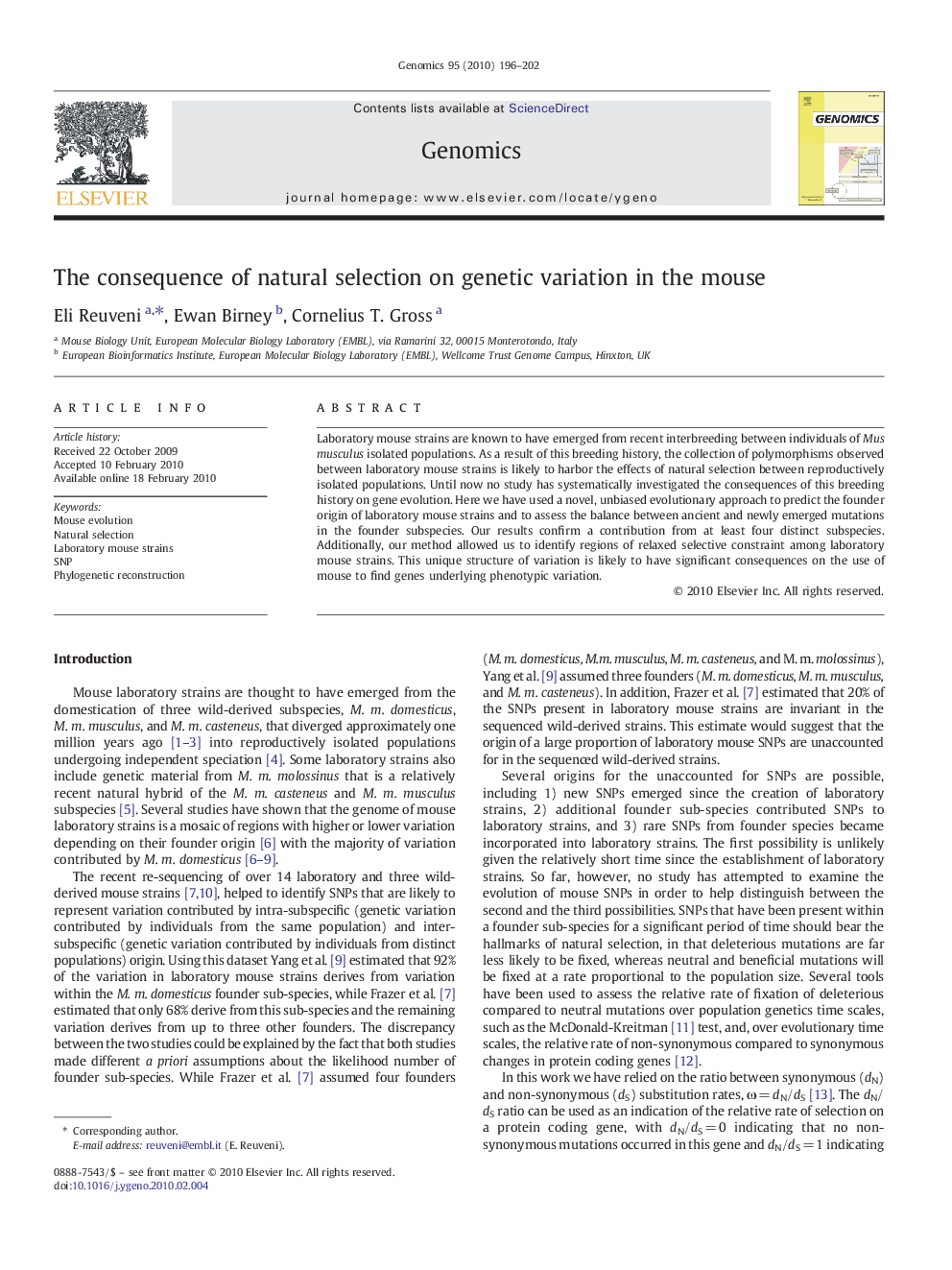| Article ID | Journal | Published Year | Pages | File Type |
|---|---|---|---|---|
| 2821209 | Genomics | 2010 | 7 Pages |
Laboratory mouse strains are known to have emerged from recent interbreeding between individuals of Mus musculus isolated populations. As a result of this breeding history, the collection of polymorphisms observed between laboratory mouse strains is likely to harbor the effects of natural selection between reproductively isolated populations. Until now no study has systematically investigated the consequences of this breeding history on gene evolution. Here we have used a novel, unbiased evolutionary approach to predict the founder origin of laboratory mouse strains and to assess the balance between ancient and newly emerged mutations in the founder subspecies. Our results confirm a contribution from at least four distinct subspecies. Additionally, our method allowed us to identify regions of relaxed selective constraint among laboratory mouse strains. This unique structure of variation is likely to have significant consequences on the use of mouse to find genes underlying phenotypic variation.
